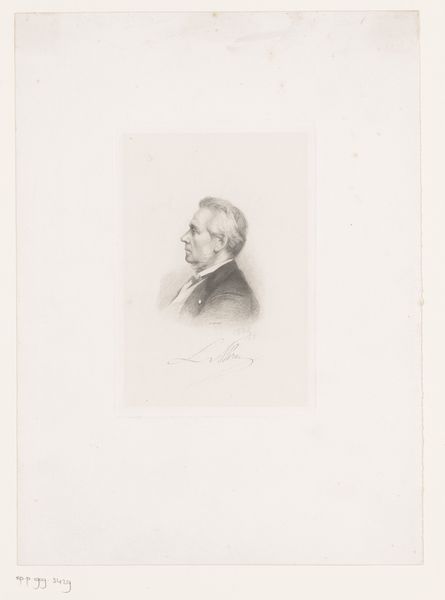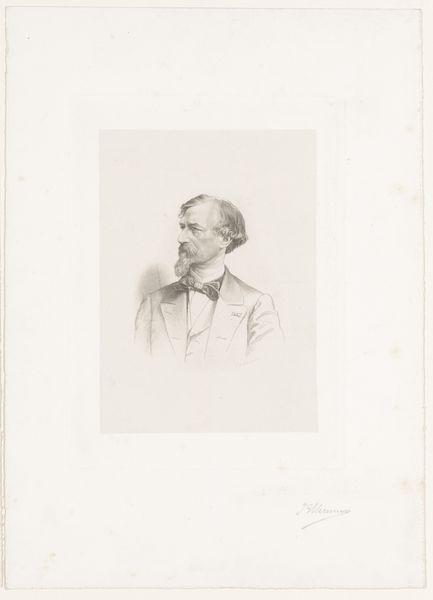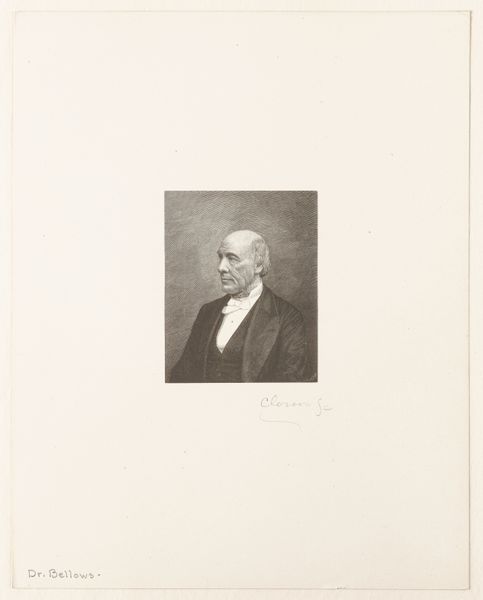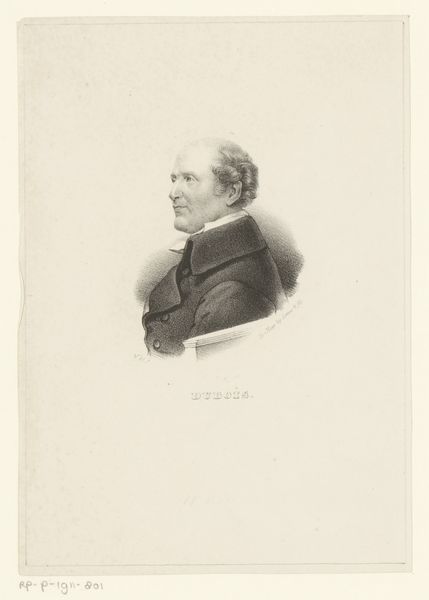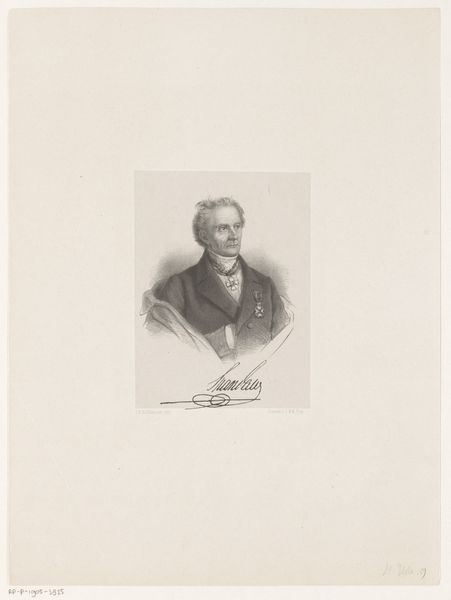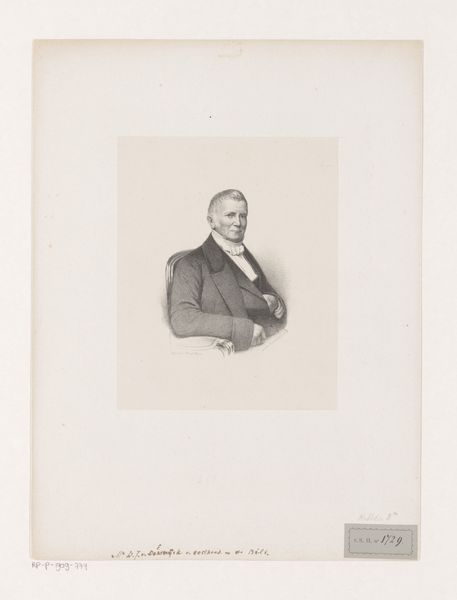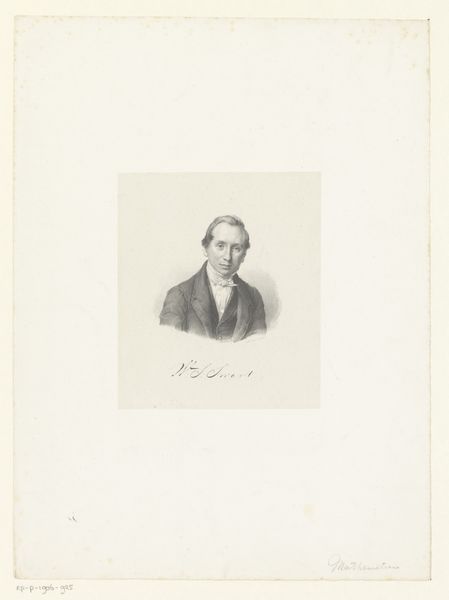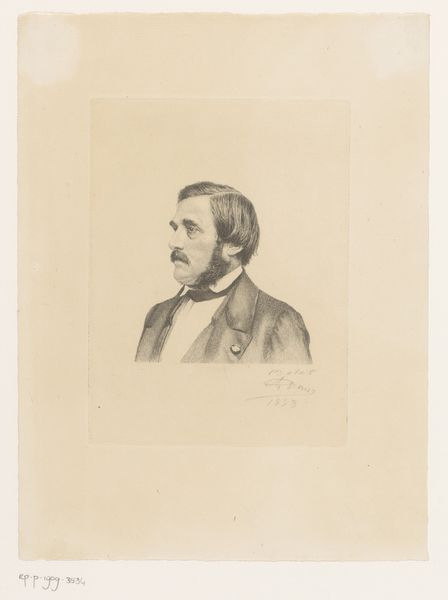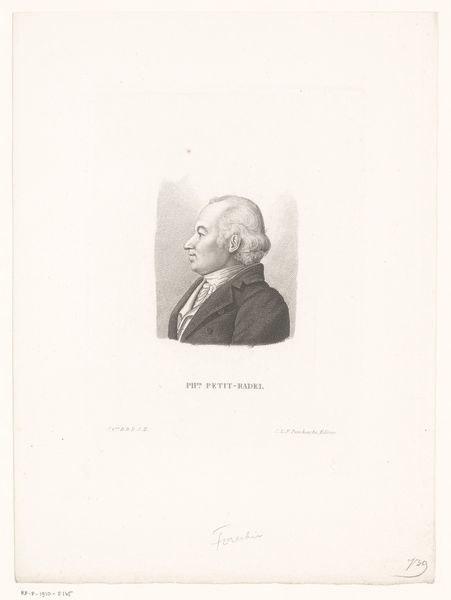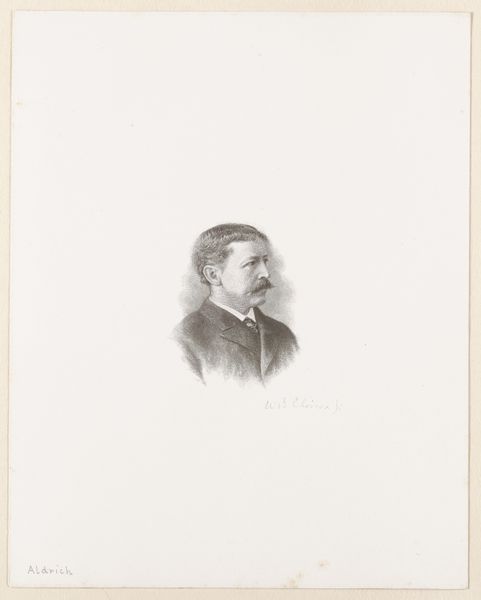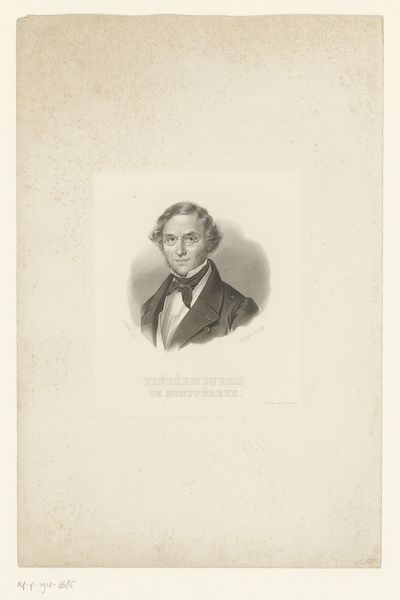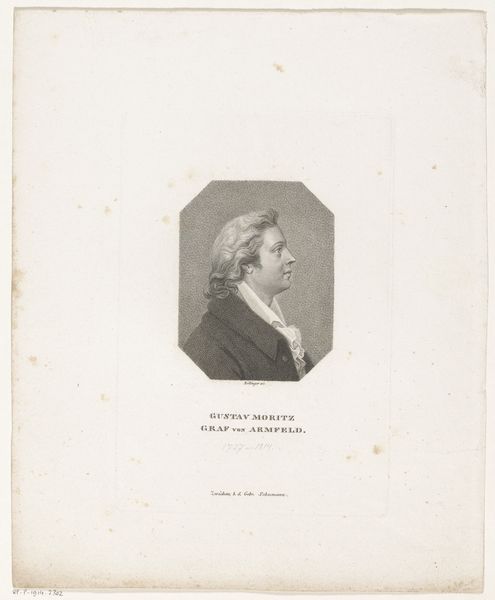
print, woodcut, wood-engraving, engraving
#
portrait
# print
#
woodcut
#
united-states
#
wood-engraving
#
engraving
Dimensions: 5 x 3 7/16 in. (12.7 x 8.73 cm) (image)12 1/8 x 9 1/2 in. (30.8 x 24.13 cm) (sheet)
Copyright: Public Domain
Editor: Here we have a portrait of Huntington from around the 19th century by William B. Closson. It's a print made with woodcut and engraving techniques. It feels very formal and proper to me, a serious depiction of a distinguished gentleman. How do you see it? Curator: What interests me here are the material conditions of its production. This isn't just an image; it's a record of labor, a multiplication of an image through the woodcut process, think about how it circulated in the 19th century? Editor: So you mean, instead of focusing on Huntington as an individual, you're thinking about the engraving process? Curator: Exactly! Consider the accessibility that printmaking provided. Engravings like this allowed portraits – typically reserved for the wealthy – to become more widely available. Who consumed this portrait and how might the production of it supported a creative ecosystem? How does that change our understanding of what it represents? Editor: I see your point. The choice of making it a print democratizes the image somewhat. So, it's not just a portrait of a man, but also evidence of changing social dynamics thanks to production methods? Curator: Precisely. And think about the engraver, Closson. His skill, his labor – those are key elements. How the use of wood or metal might impart particular artistic qualities that influence viewers understanding. What happens when it degrades and needs replaced? The material and production process has implications that are frequently overlooked. Editor: That's a totally different way to look at it. I was stuck on reading it as a simple representation, but it's much more than that! Curator: Indeed. By shifting our focus to the means of production, we uncover a wealth of social and economic information embedded within the art object itself. Editor: Thanks, I will certainly be thinking more about the materials when looking at art. Curator: And the hands that shaped them!
Comments
No comments
Be the first to comment and join the conversation on the ultimate creative platform.
